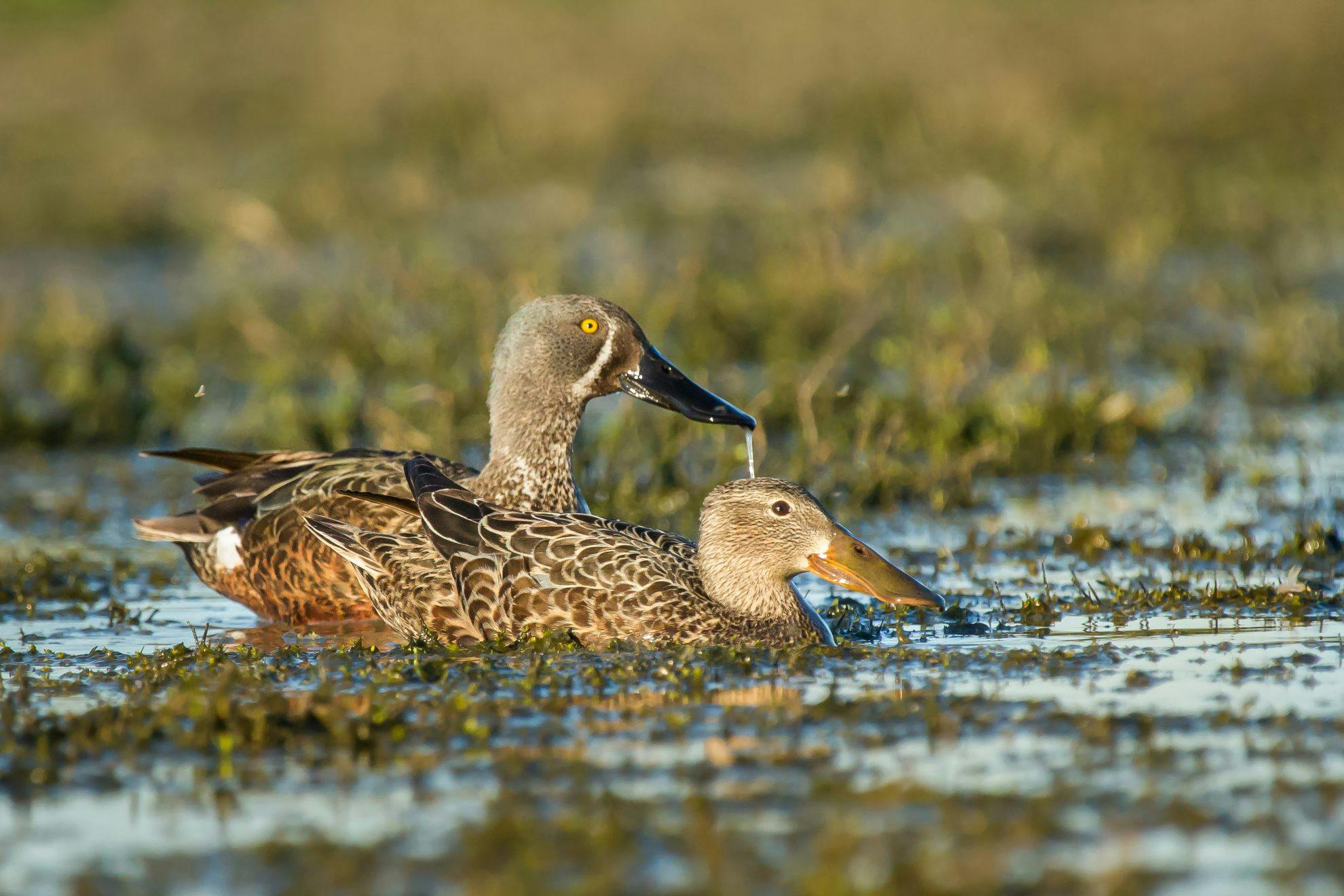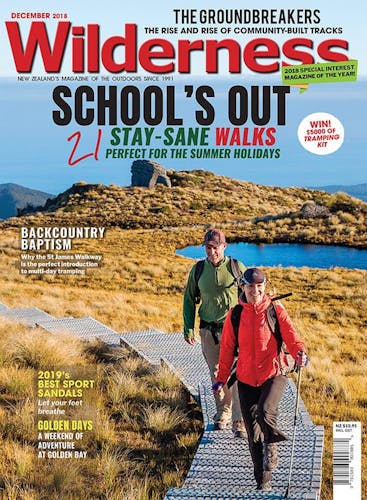The Australasian shoveler is a highly mobile species with many birds traversing the length of New Zealand annually before returning again to their specific breeding areas.
Conservation status
Native species classified as ‘not threatened’.
Features
The most distinguishing feature of the Australasian shoveler/kuruwhengi is its large shovel-shaped bill that is almost twice as wide at its tip as at
its base.
Males are colourful, with a brown and white mottled chest and chestnut-coloured flanks. They have a lovely blue-grey head and neck and a distinctive white crescent-shaped band at the base of the black bill and bright orange eyes. The female is a mottled brown colour with a dull brown eye.
Nesting
The nesting season is in October, but just prior to that, birds gather in large flocks at traditional lakes to perform spectacular courtships. Paired up birds then seek out small, secluded ponds, drains or creeks for their breeding and feeding territories.
Nests are usually located in long grass near water. The male will mate with the female right up until halfway through the 24-day incubation period. Once hatched, the ducklings are raised solely by the female over about eight weeks and are rarely active or conspicuous during the day.
Bird spotting Tip
Australasian shovelers will live happily with other species of duck on large bodies of water. A good way to distinguish the shoveler, at a distance, is too look for groups of ducks separate from the main flocks as they tend to keep to themselves. At closer range, the shoveler’s flattened, broad bill stands out compared to other ducks.
Diet
The Australasian shoveler is a ‘dabbling’ duck and feeds mostly by filtering water or mud through its bill. They eat freshwater molluscs, crustaceans and insects as well as seeds of aquatic plants. Most feeding takes place in open water rather than at the wetland margins.
Call
Shovelers are rarely vocal. When they are, the male emits a rapid ‘chuff-chuff’ call and the female gives a more typical descending duck ‘quack-quack-quack’.
Feathery Fact
The shoveler’s survival rates and the extent of the annual movements are influenced by El Niño weather patterns.
For example, for shovelers breeding and moulting in the Waikato, El Niño conditions induce lower survival and increased movement out of the district, whereas similar conditions in Southland and Otago cause the opposite – higher survival and decreased movement of birds.








